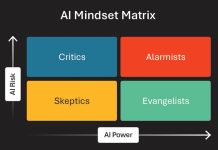As the highly anticipated initial public offering of Airbnb crept closer last year, stock analysts swooned over the company’s ability to garner 91% of its website traffic organically — 10 times the organic traffic of its competitor, Booking.com.
“Google searches reflect that Airbnb has eclipsed the equity of century-old brands, in one decade, across markets big and small,” wrote entrepreneur and NYU marketing professor Scott Galloway. “While competitors may have equity in a specific market, no brand sits on the iron throne across all markets as Airbnb does.”
Zac Harris, director of SEO at Nacho Analytics, which provided its customers website analytics of competitors, had a different take. While acknowledging that Airbnb has elite-level brand awareness, Harris noted that Airbnb’s completely branded organic search can be problematic. People who find Airbnb offerings do so by typing “Airbnb Chicago” or other destinations into Google. “That’s significant and not ideal because [Airbnb is] missing out on traffic for terms like ‘vacation rentals in Chicago,’” Harris wrote.
In contrast, Vrbo, a vacation rental company owned by Expedia Group, “crushed” Airbnb when it came to searches that did not mention a brand (“vacation rentals in Chicago,” for example). At the time Harris was comparing the two companies’ search performance, 31 of Vrbo’s top 100 search terms by volume were non-branded. In fact, for searches that did not include a brand, Vrbo almost always appeared before Airbnb. “In many cases, Airbnb doesn’t even land on the first page (and you know what they say about page two of Google),” Harris wrote.
An Ongoing Battle
Ultimately, Harris states in his 2019 comparison, Airbnb’s overall digital marketing strategy is more effective than Vrbo, but he adds that both companies have room for improvement. He argues that Airbnb is not the digital marketing juggernaut that some investment analysts would have you believe.
Editor’s note: Though Nacho Analytics assured its customers that its methodology for providing insights into competitors’ website analytics was perfectly legal, the company closed in 2019 after it was shown that it inadvertently exposed proprietary information such as patient names and doctors they visited, vehicle identification numbers of cars purchased and the name of the buyer, and travel itinerary information of trips booked on Booking.com, Priceline and other reservation sites to third parties.
That’s clearly unconscionable, but it doesn’t make Harris’ insights any less valid. There is more than one way to compete and succeed in digital marketing. It’s a continuous battle to stay relevant within your industry, and though it may seem like you’re getting trounced, a closer examination may reveal you are doing some things better than your competitors.
Like most everything else in the era of a global pandemic, the digital marketing transformation has been accelerated for most companies. As B2B companies continue to expand their digital marketing efforts, they can cull lessons from the B2C clashes like that between Airbnb and Vrbo.
In fact, says George Westerman, senior lecturer with the MIT Initiative on the Digital Economy, because B2C marketers are well ahead of their B2B counterparts in implementing digital marketing strategies, B2B companies would be well-served adopting some B2C digital marketing techniques.
Becoming a Butterfly
“In the B2B world, you need to adopt the methods that the B2C people use in a different way, and that’s not going to be natural,” Westerman told SMM in a telephone interview. Many B2B manufacturers still deploy a “catalog approach” to sales, with inside reps relying on frequent touches with prospects and customers to close deals. Even in the pandemic, many B2B companies tried to adapt that approach to the new world order by simply shifting in-person sales presentations to video calls. “That’s not how B2C marketing works anymore. Digital marketing in B2C is segmenting customers, micro-segmenting and then trying to hit them quickly with stuff.
“The other thing that happens in B2C marketing that doesn’t happen in B2B marketing yet is a lot of experimenting,” Westerman adds. “We’ll hit you with something, if you don’t respond to that, we’ll hit you with something else; if you don’t respond to that, we’ll hit you with something else.”
In 2014, he co-wrote an article for MIT Sloan Management Review entitled “The Nine Elements of Digital Transformation” in which the authors state, “Leading digital change requires managers to have a vision of how to transform their company for a digital world.” Successfully navigating a digital transformation requires what the authors call “digital masters.”
Westerman emphasizes that companies seeking digital transformation continue to focus too much on the digital component and not enough on the transformation. “Digital transformation is using technology to radically change the way you do business. You may do it in pieces, but it’s more than just buying digital tools. It’s rethinking the way you’re working.”
In an article published last November updating their 2014 piece, Westerman and co-author Didier Bonnet state that a large percentage of companies continue to struggle with their digital transformation.
“Digital masters cultivate two capabilities: digital capability, which enables them to use innovative technologies to improve elements of the business, and leadership capability, which enables them to envision and drive organizational change in systematic and profitable ways. Together, these two capabilities allow a company to transform digital technology into business advantage.”
As Westerman explained during our recent conversation, “One reason it’s a struggle is because people think of it only as a technology problem. They try to work the old way only faster or broader, but what they really need to do is think about new ways of working. When digital transformation is done right, you’re like a caterpillar turning into a butterfly. In most cases, people are just thinking about digital transformation as becoming a faster caterpillar.”
Reskilling to Remain Competitive
Westerman and Bonnet report that in a 2018 survey they conducted of 1,300 executives in more than 750 global organizations, only 38% said their companies have the digital capability needed to become digital masters, and only 35% said they have the leadership capability to do so.
In their article, Westerman and Bonnet explore multiple elements of digital transformation that drive organizational change, including operations, employee experience and business models. For our purpose, we asked them to focus on digital marketing.
“We really need to rethink the back-slapping good guy who sells these things personally with a handshake,” Westerman says. “We need to rethink what that person’s role is if so much more is moving through a digital channel. When you hire the person who knows everyone in the industry, that’s helpful. But there are also ways to get everyone in the industry to know you without hiring that person. It could totally disrupt the way we think we succeed in marketing.”
Bonnet points to upskilling employees as a vital component for B2B marketers to get where they need to be. Indeed, in a February 2020 poll by McKinsey, 43% of business leaders reported existing skill gaps, 87% predicted further skills gaps within the next five years and 56% plan to use reskilling programs to plug these gaps.
“I work with a few companies where, six or seven years ago, the marketing department was full of creative and agency people. Today, it is full of data scientists. The companies that have not shifted their resources or reskilled their workers are really struggling,” Bonnet told SMM.
Microsoft CEO Satya Nadella said as much in a Jan. 30 Wall Street Journal story headlined “Businesses Are Being Pushed to Evolve.” “What we are witnessing is the dawn of a second wave of digital transformation sweeping every company and every industry. Digital capability is key to both resilience and growth. It’s no longer enough to just adopt technology. Businesses need to build their own technology to compete and grow.”
Where to Begin?
Besides skill deficiencies, paralysis by analysis could be another reason companies have not made more progress in digital transformation since Westerman and Bonnet wrote their original article in 2014. Steven Casey, principal analyst at Forrester, says the market research company’s regular surveys of technological investments helps its clients prioritize investments by providing a glimpse at what marketing technology other companies are investing in and what they feel provides the biggest ROI. The most recent Forrester Tech Tide report polled 80 professionals with knowledge of the B2B marketing technology industry between late August and mid-September 2020. Forrester analysts used the responses to shape this list of six B2B digital marketing technologies they classify as providing high business value and worthy of investment:
• Account-based marketing platforms
• Chatbots and virtual assistants
• Customer data platforms
• Marketing event management solutions
• Marketing performance analytics
• Online video content platforms
Interestingly, Casey says digital marketing technologies such as content marketing platforms and social advertising solutions have become less important to invest in separately since newer tools incorporate those elements into their capabilities. Direct email solutions also fall into the category of a technology that has been swallowed up by larger platforms, while technologies like virtual reality and augmented reality have not proven worthy of investment for companies outside of a few niche industries.
In its digital marketing starter’s guide for small businesses, inbound marketing software maker HubSpot states, “starting your digital marketing strategy is as simple as starting with why you want to do it, deciding what you want to do, how you’re going to do it, what you expect to happen, and when and how you’ll measure your success.” Clear, measurable goals are a must. Common reasons for creating or enhancing digital marketing efforts include increased brand awareness, lead generation and growth from existing customers.
The overarching objective of any digital strategy, the HubSpot report states, should be delivering a better customer experience at every digital touchpoint to turn them into promoters of your brand. “People don’t have the same trust they had with businesses back in the day. But one thing that remains truer than ever is that people trust their peers. When you think about digital marketing, you’ll want to consider how you’re turning strangers into people who will advocate for your business and products.”
It’s Still a People Process
While it’s imperative to upgrade your marketing technology and upskill your workers, even the most ardent supporters of digital sales and marketing tools agree that connecting with customers and prospects is ultimately a people-oriented process.
“Digital technology should not be a substitute for human connections,” Microsoft’s Nadella told The New Yorker in a recent article on the future of offices. “Digital technology should help human connection when there are constraints of space and time.”
In a January web presentation hosted by Matt Heinz of Heinz Marketing that was billed as bold ideas for marketing leaders, Heinz and his two featured panelists started by touting the power of…wait for it…the telephone and direct mail.
“Let’s start with this idea that sales and marketing have gone completely digital. I push back at that premise” Heinz said. “A year ago, as people started shutting down their offices, there was a roar of approval from the social selling crowd that this was their moment. We’re still seeing the telephone as a very prominent and successful component of sales strategies.”
“It’s not all digital or no digital,” said Russ Somers, vice president of marketing for TrustRadius, a review site for B2B technology. “Anytime you have a boom in one area, it creates opportunities in others.” Somers says even those marketing solutions that are decidedly non-tech are carefully integrated with digital solutions. “To me, the big thing is that 60% of the people driving purchases are millennials, and they buy differently. They expect the online and the offline to be really well integrated.”
Successful strategies are buyer- and market-specific, added panelist Sally Duby, a managing partner at The Bridge Group, a B2B sales consultant. Duby said calling customers and prospects on their cellphone was somewhat taboo prior to the pandemic, but has become more accepted since no one is in their office. One chief marketing officer at a prospective client she had reached out to told her that he gets over 200 emails a day from vendors. “You can’t make any traction when you’re one of 200 or 300 in someone’s email, but if you’re only one of five or six that is using the phone, you’re going to get a lot more attention.”
Holding up his cellphone, Somers concurred. “My number of lifelines to be reached has decreased. When you can get in this in box, it is my priority.”
Marketing’s Expanding Role
The emergence of increasingly sophisticated digital marketing tools, combined with shifts in sales strategies that began with increased deployment of buying teams and that was hugely impacted by the global pandemic, is elevating marketing’s role in the B2B sales process.
In the pre-digital era, sales reps primarily drove business growth through relationship selling and marketing supported sales with trade shows, events, sales decks and direct mail, says Nick Heys, founder and CEO of Jabmo, an account-based marketing platform provider. Digital marketing technologies promised to accelerate revenue growth as much as a decade ago, but Heys says tools such as website content management systems, social marketing and marketing automation never really met the lofty expectations that had been set.
He expects marketing to have a bigger role in driving business growth. “In 2021, marketers are going to get a seat at the table,” Heys told Martech Today earlier this year. “They’re going to move from the back seat to being co-pilots with the sales organization. They’re taking responsibility now for what the salespeople can’t do, and that’s digital selling. ABM is all about digital selling: doing what salespeople used to do on the golf course, in face-to-face meetings, and trade shows, is now being done through highly personalized, sequenced messaging.”
Peter Schoeman, founder and CEO of The Dog Adventure, a website that connects manufacturers with dog owners through content marketing, expects, B2B marketers’ role to continue to transform. Schoeman responded via email to a query we posted online.
“B2B marketers will be tasked to do more than drive awareness of their product or brand, they will have to capture leads at every stage and then guide the lead through the process until the very end, targeting the person with tailored messages that keep their interest through every stage of the process — from awareness to conversion,” Schoeman says. “Additionally, B2B marketers’ jobs won’t be done at the conversion stage. They will also have to find ways to build and maintain customer relationships and loyalty through continuous, meaningful communication.”
Setting a Budget
What does all this mean for marketing expenditures in 2021? John Buscemi, principal at marketing agency TriComB2B, states in a blog post that many companies spend up to 10% of gross revenue on marketing, though B2B companies tend to be more conservative than B2C.
“Our own experience indicates mature B2B manufacturing, industrial, construction and engineering companies usually allow 0.5 to 2% of revenue for marketing. Start-ups and fast-growth market entrants are more aggressive, allocating as much as 5%,” Buscemi writes.
“A same-old, same-old approach to percentages and allocations is still too prominent among many B2B companies. Make sure you build your plans from the ground up each year, especially in 2021, when so much of the landscape has changed,” he adds. “Picking a percentage and developing arbitrary allocations without accounting for your real needs is not only bad for business, but it can also leave you under- or overfunded.”
Buscemi cautions that it’s important not to simply look at current projections versus prior-year marketing spend. Instead, review market drivers, trends and environmental changes that have taken place, and prioritize your plan to focus on those initiatives that deliver value to the business.





